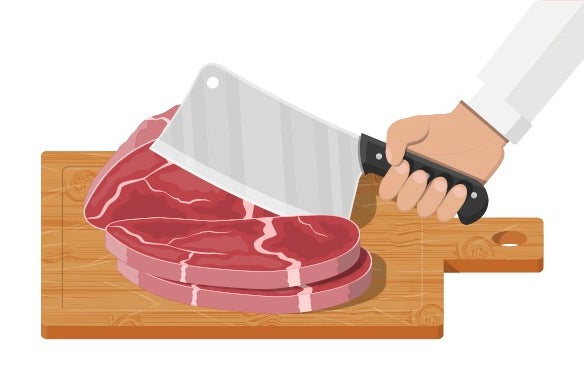Production agriculture contributes 5% to the overall U.S economy. The combined values of agriculture, food and related industries contributed $1.05 trillion to the U.S. gross domestic product (GDP) in 2020.
This type of agriculture is where large quantities of crops and livestock are produced through industrialized techniques for the purpose of sale. The goal of this is to increase crop yield, which is the amount of food that is produced for each unit of land.
Benzinga spoke with an unnamed source at a full-line specialty and wholesale distributor, about what is happening in this sector.
The year 2020 was poised to be a bull market for U.S livestock interests. Red meat and poultry output was predicted to reach record levels, according to USDA livestock specialists, as economic expansion and low unemployment increase consumer demand for animal protein.
By the end of April 2020, though, one of America’s largest meat manufacturers, Tyson Foods, Inc. TSN, warned that the “food supply chain is breaking” because of how radically the epidemic affected the economic and agricultural landscape.
“Right now, there is a whipsaw effect from [COVID-19] pandemic shutdowns,” said the unnamed source.
Pre-pandemic, wholesale back ribs (pork) would cost anywhere between $1.80 to $1.90 [per pound] to $3.30 on the high side; during the summer of 2021, prices got as high as $3.70. “Basically, it’s fresh meat arbitrage,” the source said.
One of the reasons pork was so expensive in 2020 and 2021 was an African Swine Flu (ASF) outbreak in China that decimated its livestock production. The U.S heavily contributed to the record 3.7 million metric tons of pork that China imported in 2020, causing domestic prices to rise.
During the pandemic, America’s farms were packed with animals raised for meat production. The problem arose when Tyson and many other meat processing plants halted operations as the virus ravaged employees, making it harder to turn those animals into packs of pork chops or ground beef that could be sold in stores.
Because COVID caused a shortage in the markets, economic incentive was born to create a surplus, “this happened with boneless chicken wings,” the source said. “Boneless chicken breast dropped $1 per pound in the last 90 days. Additional supply and disease control contributed to this.”
Our source said that because the pandemic created such a demand, wholesale buyers stocked up on whatever they could get their hands on during and after the pandemic — now, they’re going to have to sell food at a loss just to move product.
“I see baby back ribs going on sale for some of the independents who didn’t necessarily have a market position. [Grocery stores] will use this as an opportunity.”
Another example of extreme arbitrage, our source said, is grain prices; which in turn will affect meat prices.
Ukraine is the world’s fifth largest wheat exporter; in 2021, the country exported an average of 4 million tons of grains (wheat, maize and barley) per month. With Russia’s war affecting the country, it has only exported 2.65 million tons in the 2022/23 season, down 46% year-over-year.
“Grain will get too expensive and the farmers can’t feed their stock — it’ll drive the price of livestock and meat down, then it will swing wildly back up when it’s time to rebuild the herd.”
July CPI showed the food index rose 1.1% in July and 10.9% on a 12-month unadjusted basis, meaning both food at home (FAH) and food away from home (FAFH) are still facing inflationary pressures, even as the price of some foods are returning to pre-pandemic levels.
The source said this is because industry input costs are rising, due to the high cost of packaging — which is petroleum-based, so it is exposed to the volatility of oil and energy prices — and labor costs are rising as employers pay higher wages to workers dealing with overall inflation.
“It’s ubiquitous in production agriculture,” the source revealed. “When the cost of crude [oil] is high, the plastics are up.”
Image and article originally from www.benzinga.com. Read the original article here.

